Do you want your pecs to be stronger and better shaped than they are right now? This chest circuit workout outlines 11 exercises to help give you great-looking pecs.
The printable list of exercises and video located lower within this article will help you get started.
Benefits of a Chest Circuit Workout
Strong pectoral muscles are not only better looking, but they are also functional.
With stronger chest muscles, your spine will have to bear less heavy lifting.
The downside to having weak pectorals – for both women and men – is that the chest area of the human body is particularly prone to the ravages of gravity.
Without strong chest muscles, the upper torso can start to look droopy.
It’s helpful to remember that muscles exist for a reason.
Symmetrically developed muscles not only give you an excellent shape, but they also make you a healthier person:
- Having some muscle tone in your torso helps keep your metabolism robust. This means you’ll burn more calories even when you’re not exercising.
- Chest muscles help you move better and improve your posture and body position.
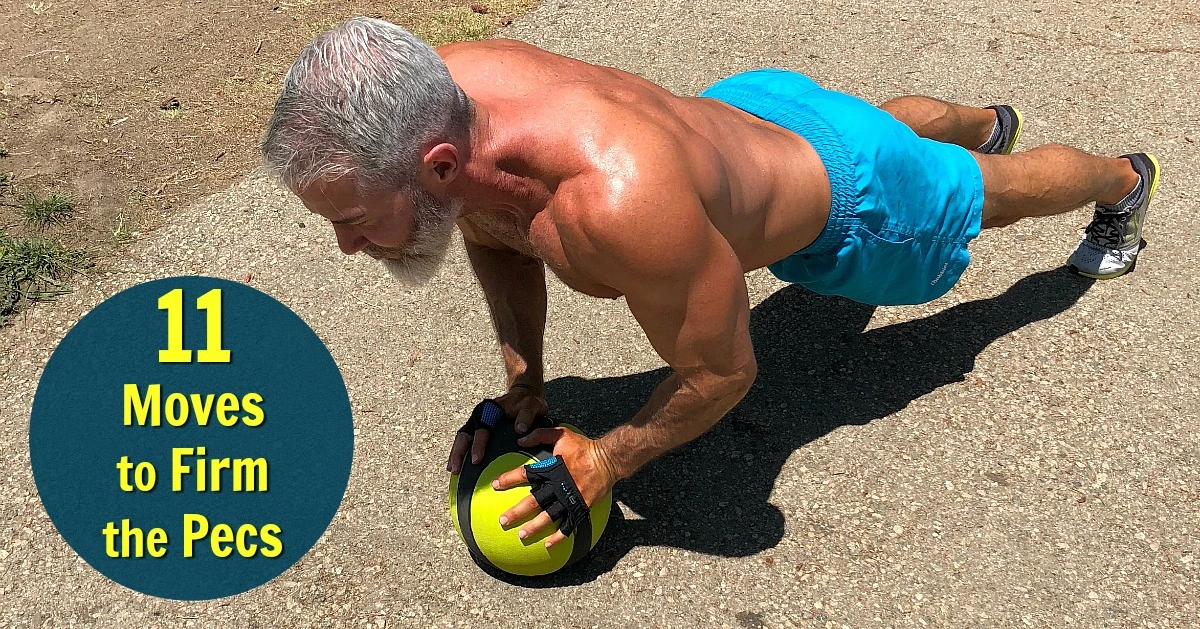
- Weak chest muscles tend to leave a torso looking saggy. If you have a higher body fat percentage, it’s still helpful to have muscles underneath the skin and fat – to help improve the overall texture and keep the area from falling south completely.
How to Do This Chest Circuit Workout
Circuit workouts are a style of training that combines cardiovascular conditioning with strength training.
Once all exercises within a circuit have been completed, you rest, then repeat the exercises.
Each circuit is completed three times before moving on to the next, entirely new circuit.
The rest period after each round is:
- Beginners rest 3 minutes;
- Intermediate-level exercisers rest 2 minutes;
- And advanced athletes rest 1 minute.
Resistance training is any movement that inspires muscles to contract against the force being applied. That force can be in the form of a dumbbell, kettlebell, barbell, resistance band, or even your own body weight.
This chest circuit workout is good for both women and men.
Where applicable, I’ve included modifications for beginners. Additionally, you can always increase or decrease the resistance to make the exercise harder or easier.
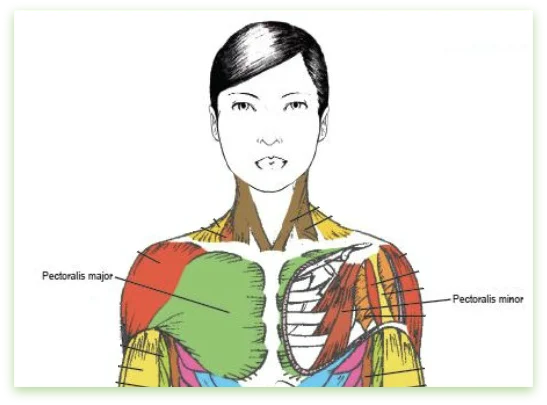
The result of these movements – when done consistently – is an increase in strength and improvement in shape, tone, and endurance.
What You Need to Know About Your Chest Muscles
Your chest comprises two muscles, the pectoralis major and pectoralis minor (see image above). It’s helpful to think of them as the pushing muscles of your torso:
- Pectoralis Major: the larger muscle that runs from the upper arm bone (humerus) to the upper-center of your front torso (sternum). Fit people with low body fat can actually see the two heads of the pectoralis major when they get a good pump. The top one is the clavicular head and the bottom one is the sternocostal head.
- Pectoralis Minor: the smaller muscle that runs underneath the pectoralis major, connecting the bottom ribs with the scapula.
The most popular exercise for the chest – indeed, the most popular bodybuilding exercise ever – is the barbell bench press.
However, it gets a tad boring doing the barbell bench press twice a week for the rest of your life.
Since the human body adapts to movement patterns quickly, you can sometimes get better results with variation and trying different chest exercises besides just the barbell bench press.
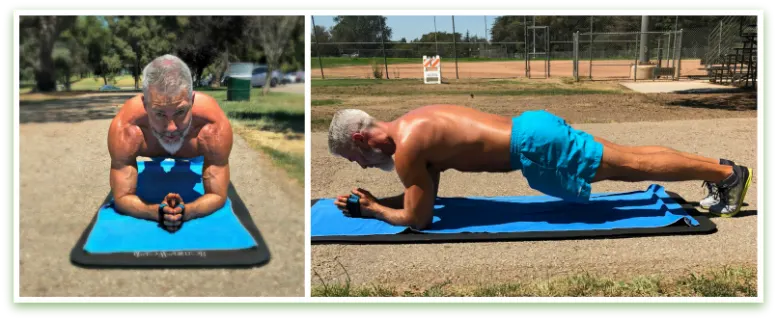
Best of all, when you try a variety of chest exercises, it can have the result of strengthening your stabilizers and making you more mobile for your barbell chest press – allowing you to increase resistance load for that fundamental exercise.
A Chest Circuit Workout You Can Do Anywhere
These 11 exercises will start defining your chest muscles:
- Each circuit is done three times.
- Do each exercise within the circuit consecutively without rest, then take a rest before repeating the circuit.
- After you complete your third time through a particular circuit, you move on to the following circuit in the series.
First Circuit (chest warm-up):
- Elbow-Supported Plank
- Plank
- Plank with Shoulder Touches
Additional Warm-up:
- Jogging
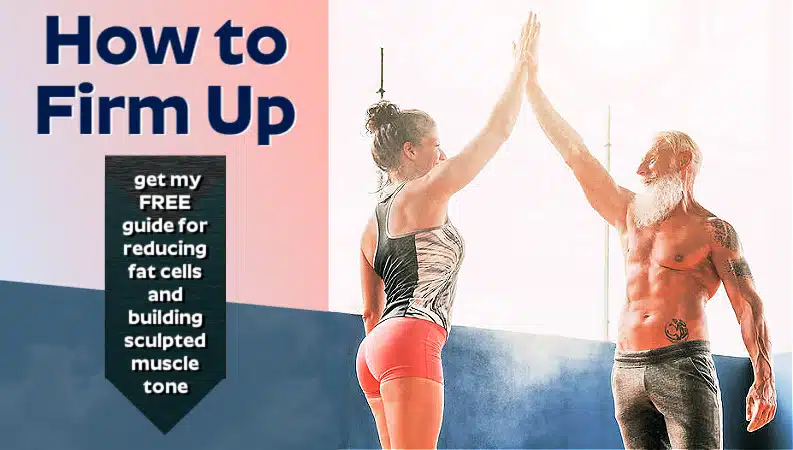
Elbow-Supported Plank
- Assume a perfectly aligned plank position.
- Pay very close attention to the positioning of your pelvis. Activate your glutes a bit, then scoop your pelvis forward and under just a tad. You accomplish this by pulling your lower abdominal plate – that upside-down triangle of ab muscle located below your navel – toward the sky with intensity.
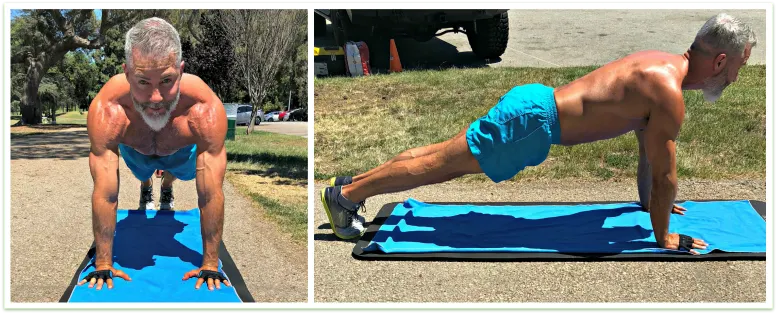
- Continue to breathe smoothly even as you hold the position, and it becomes challenging.
- Beginners hold 30 seconds. Advanced athletes hold 45 seconds.
Plank
- The plank is among the best exercises for firming your core. Take pride in doing it as perfectly as you can.
- Beginners hold 30 seconds. Advanced athletes hold 45 seconds.
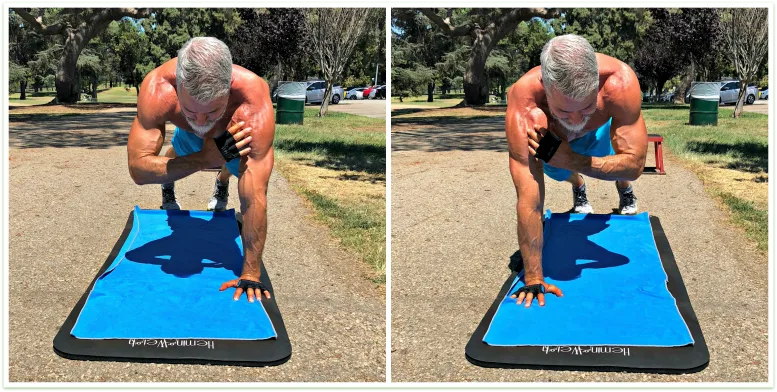
Plank with Shoulder Touches
- Same as a plank, but you alternate touching each shoulder.
- 20 times (10 times each side).
- Maintain a slow yet consistent speed.
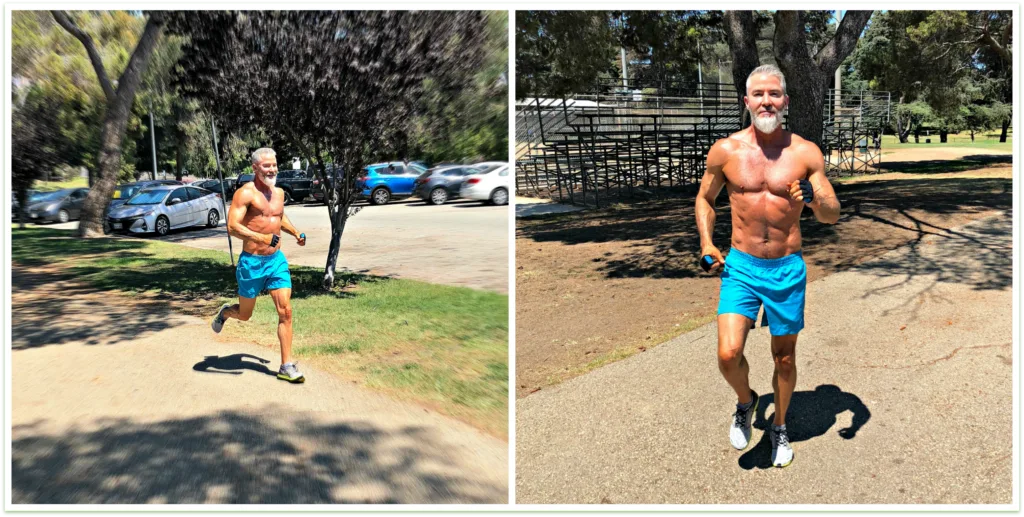
Run to the End of the Block – or Jog in Place, or Treadmill
- If you’ve been sitting all day, or if you’re over the age of 50 like me, you might need a little extra warm-up. I do a light 1-minute jog at the end of the first circuit to make absolutely certain that I’ve raised my body temperature, lubricated my joints a bit, and circulated some blood and oxygen into my major muscle groups.
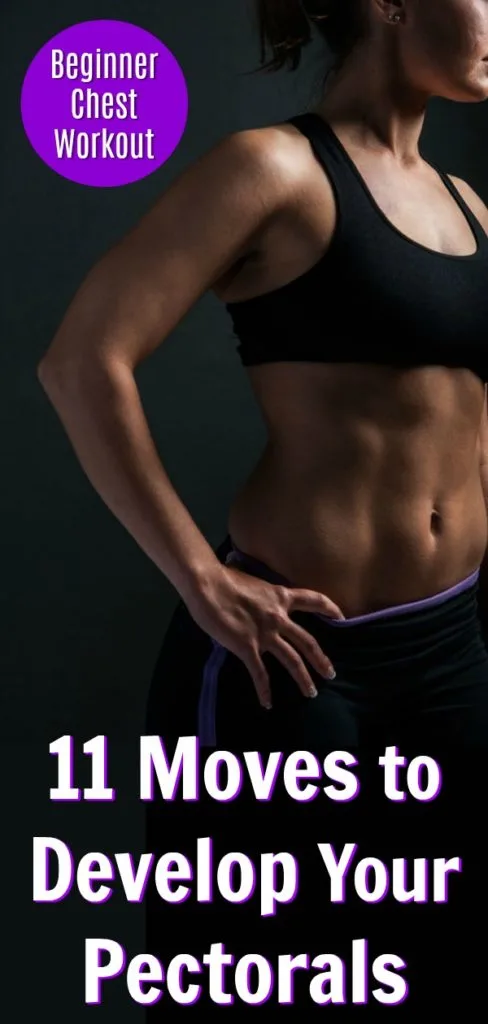
Second Round in this Chest Circuit Workout:
- Double-Ball PushUp
- Single-Arm Roll-Ball PushUp
- Plyometric PushUp with Clap
Double-Ball PushUp
- 10 pushups with a weighted ball under each hand.
- Weak or tender wrists? Do regular pushups instead.
- Uncomfortable elbows? Keep the hands further apart and come down only halfway.
- Abs getting tired? Separate your feet further apart.
- Use torque. Press your palms fully and evenly into the floor – pretend you’re trying to push down and twist out, but without actually moving your hands.
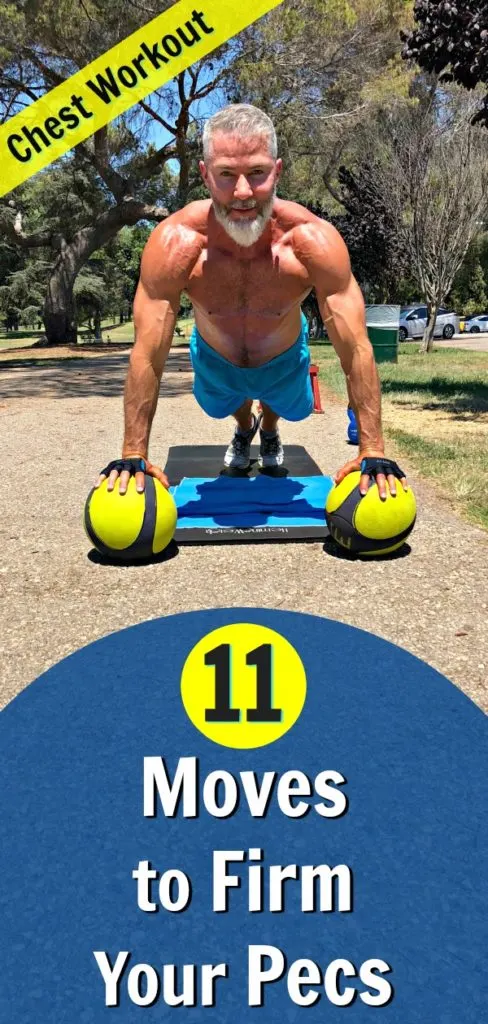
Single-Arm Roll Ball Push Up
- 8 pushups with one arm on a weighted ball.
- After each repetition, roll the ball across and use the other hand for the next rep.
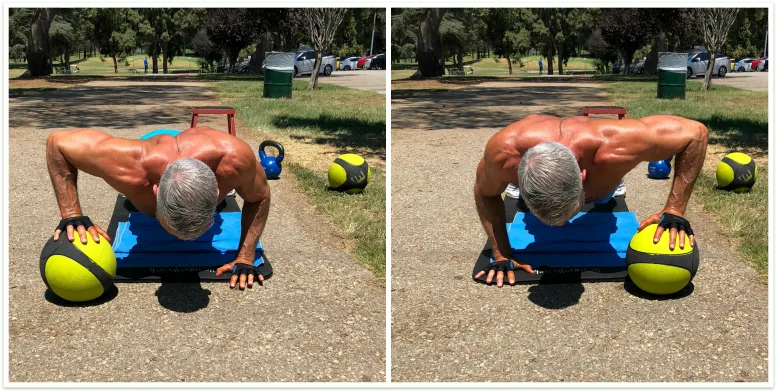
- Be mindful of your wrists, elbows, and shoulders.
- If you need to, limit your range of motion.
- For beginners, see photo below:
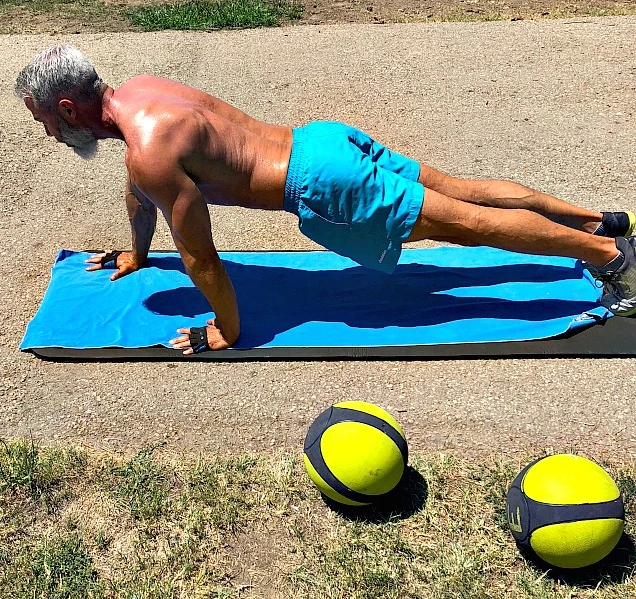
- Athletes will often hold their breath when things get complicated. Do the opposite: keep your breath flowing freely.
- The funny thing about pushups is that, sometimes, your abdominal muscles will start to fatigue before your arms do. If that happens, resist the temptation to let your waist sag. Keep your navel pulled up tightly. Be fiercely protective of your lower back.
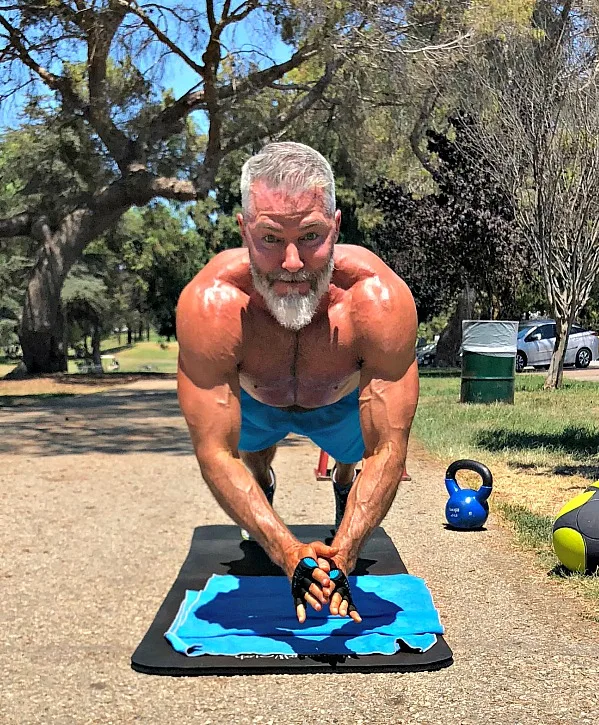
Plyometric PushUp with Clap
- Push so hard during your pushup that you become airborne and can sneak in a quick clap.
- 8 reps.
- If you’re feeling exhausted, shaky, or your palms are sweating, do not do the plyometric jump. Be certain to do these on a sticky pad. You don’t want to slip.
- Modifications for beginners (see photo below):
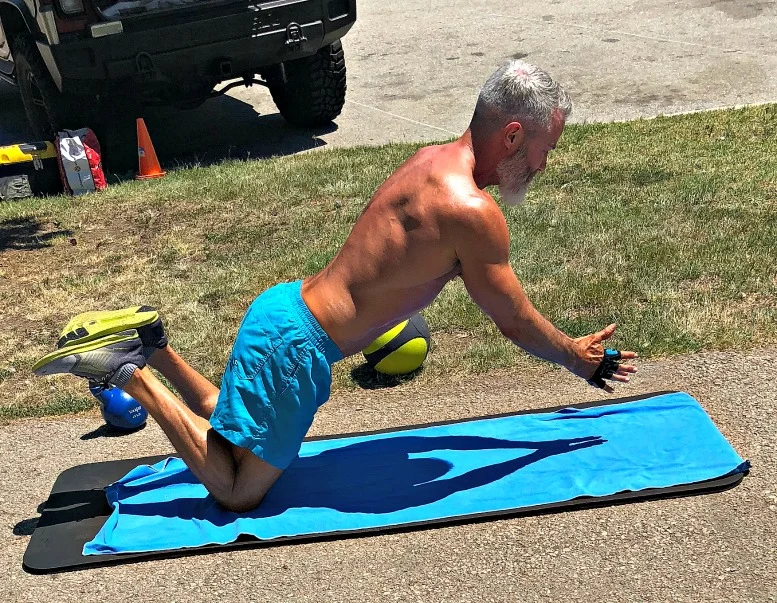
Third Round in this Chest Circuit Workout:
- Single-Arm Kettlebell Press on Stability Ball
- Dumbbell Fly on Stability Ball
- Close-Grip Ball PushUp
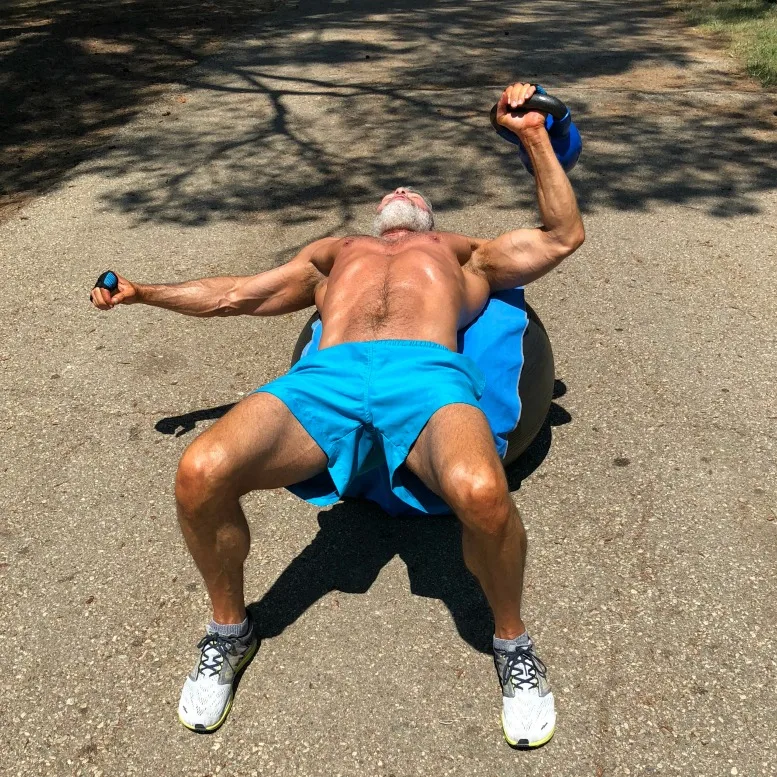
Single-Arm Kettlebell Press on Stability Ball
- 10 reps each side.
- Grab a kettlebell or dumbbell and press it up over your chest, using a stability ball as your “bench.”
- Remember to keep your pelvis stable and centered (without arching your lower back).
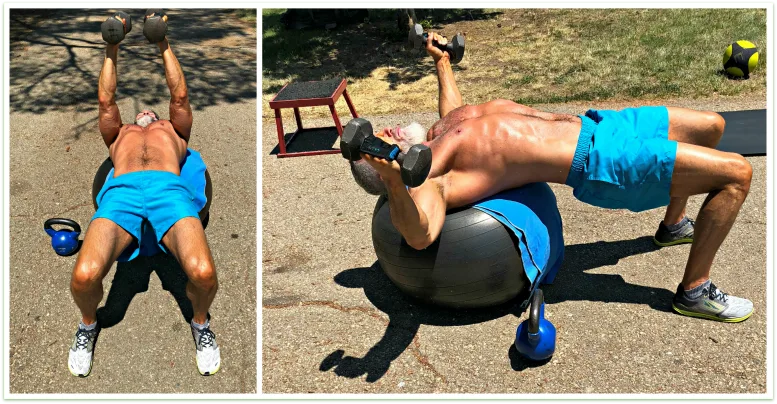
Dumbbell Fly on Stability Ball
- 14 reps.
- Open up your arms wide, but with a slight bend in the elbows.
- Use the strength of your chest to bring the dumbbells together over your upper chest, almost straightening your arms.
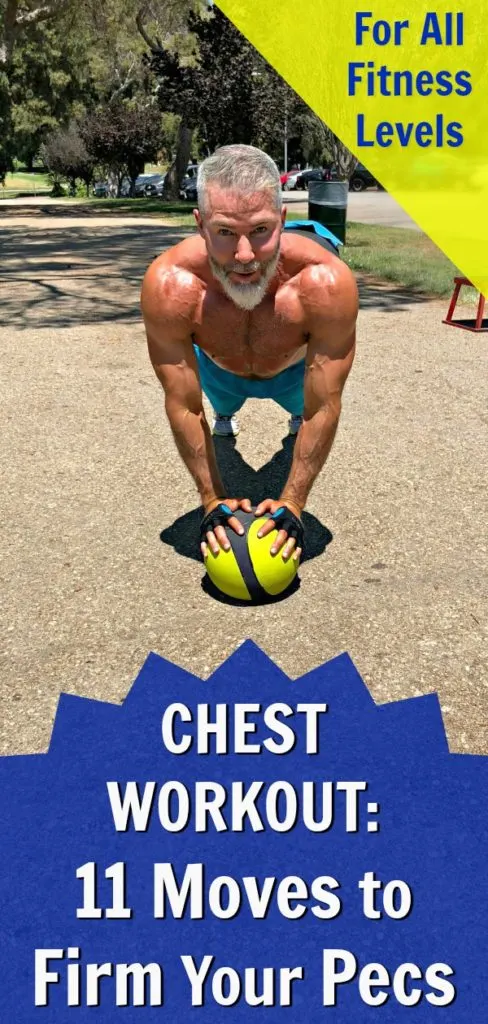
Close-Grip Ball PushUp
- Close grip push-ups on the weighted ball.
- 8 reps.
- Maintain perfect plank positioning.
- Modification for beginners is close-grip pushups on the ground with hands in a triangle position (see photo below). If your arms are fatiguing and you’re unable to make it to 8 repetitions, then lower your knees to the mat and continue.
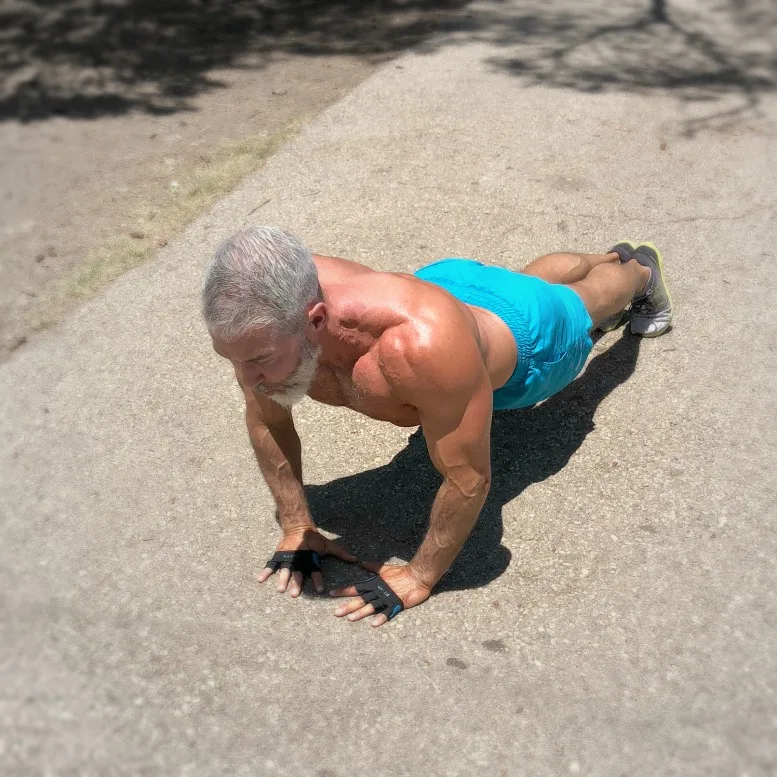
Fourth Round in this Chest Circuit Workout:
- Decline PushUp on Fists
- Kettlebell Pullover on Stability Ball
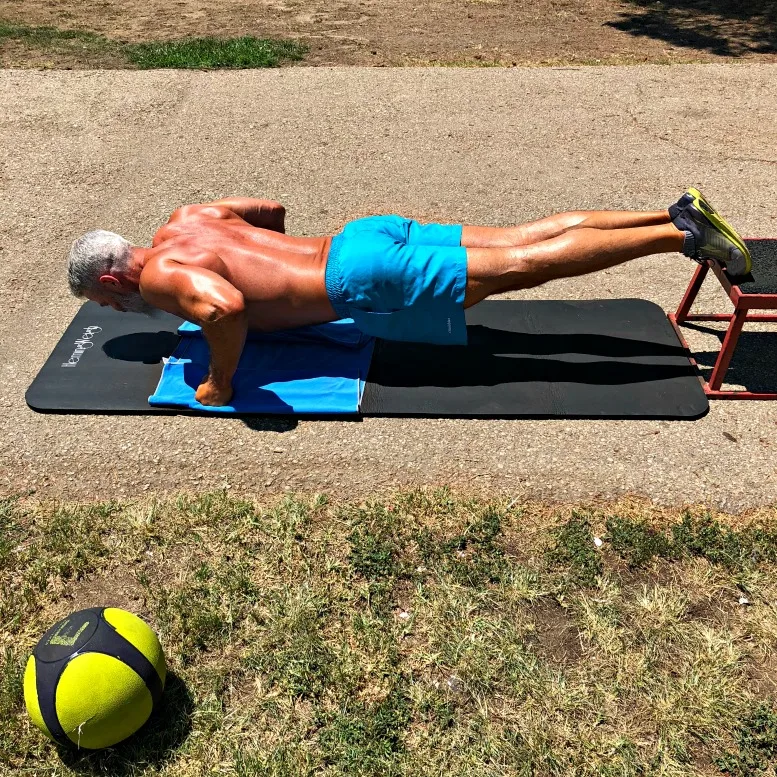
Decline Chest PushUp on Fists
- If your hands and wrists will allow for it, do pushups on your fists instead of your palms.
- Raise your feet up on a bench or platform.
- Keep your elbows closer to your torso as you lower down.
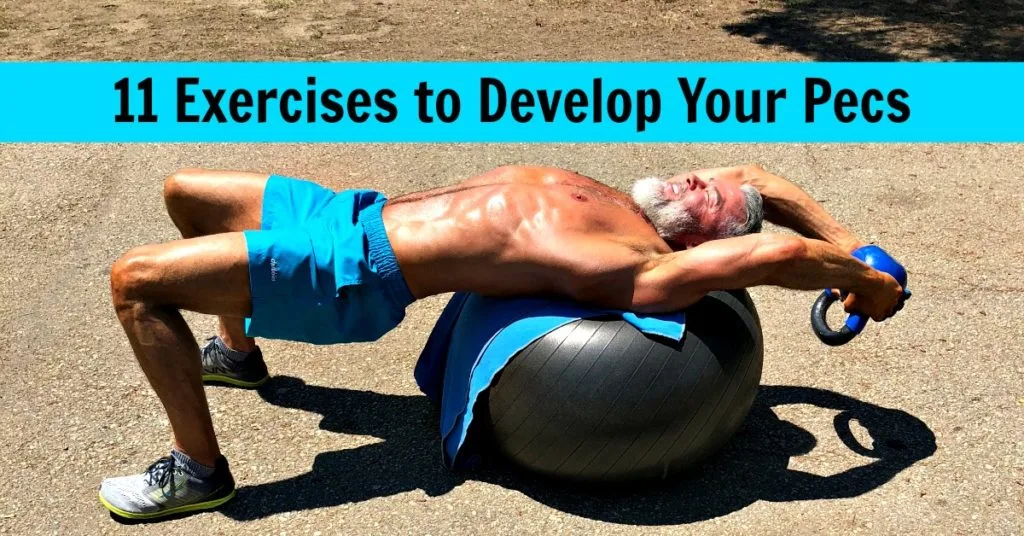
Kettlebell Chest Pullover on Stability Ball
- Raise your arms back over your head while using a stability ball as your support.
- Slight bend in the elbows, then straighten your arms a bit more as you bring the kettlebell or dumbbell up over your chest.
- Initiate the movement from your chest muscles (more than your shoulders or arms).
- It’s okay to drop your hips a bit – if your lower back will allow it – but keep your abs tight and your glutes active.
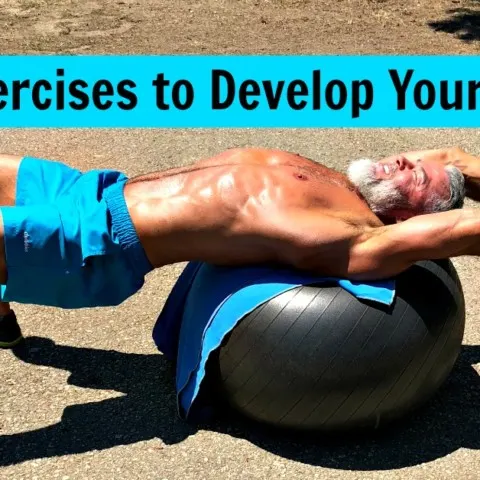
Chest Circuit Workout for Gravity-Defying Pecs
When pectoral muscles get weak, they lose the fight with gravity. This 11-exercise chest circuit workout will help you stay fit and keep your torso from looking droopy.
Tools
- Towel, kettlebell, stability ball, weighted balls, mat, dumbbells.
Instructions
Do these exercises with good form and proper breathing.
MEN: for adding size, do fewer reps with more weight.
WOMEN: for increased definition and shape, do more repetitions with less resistance.
- Elbow-Supported Plank
- Plank
- Plank with Shoulder Touches
- Double-Ball PushUp
- Single-Arm Roll-Ball PushUp
- Plyometric PushUp with Clap
- Single-Arm Kettlebell Press on Stability Ball
- Dumbbell Fly on Stability Ball
- Close-Grip Ball PushUp
- Decline PushUp on Fists
- Kettlebell Pullover on Stability Ball
Notes
Err on the side of caution. If your shoulders are feeling particularly tight on chest day, then spend more time warming-up and consider lowering the resistance.
During chest exercises, it's tempting to let your deltoids and triceps do most of the heavy lifting. Instead, initiate the movement from your pectorals. Visualize the muscle group you're trying to work as you do each exercise.
Executed properly with good form, this chest circuit workout can help to give you beautifully sculpted pectorals and improve your overall physical conditioning.
The entire chest circuit workout can be done in under 45-minutes.
As always, ask your medical doctor before beginning any new exercise regimen.

How to Plan and Organize Your Workouts Using Pinterest
Wednesday 14th of August 2019
[…] supple), flexibility stretches (for shortened muscles), balance training, strength movements to develop muscle, cardiovascular and lung conditioning to better your endurance, and once in a while include an […]
9 HIIT Outdoor Park Workout Ideas with High Intensity Interval Training
Monday 29th of July 2019
[…] to alternate arm positioning so that you condition your triceps and pectorals […]
16 Battle Rope Exercises for a Lean, Powerful Body • Over Fifty and Fit
Sunday 7th of July 2019
[…] you push up, imagine pushing from your chest muscles especially (instead of initiating from the arms only). Beginners separate your feet wide; […]
How to Create Your Healthiest Body Yet (Even After Age 50)
Sunday 16th of June 2019
[…] I’m training with weights, I visualize – in my mind – the muscle group I’m […]
The 4 Lifestyle Factors that Determine Posture and Weight
Friday 24th of May 2019
[…] skeletal system and musculature might be weak and even unhealthy. It’s important to make resistance-training a part of any self-care regimen, particularly after the age of […]